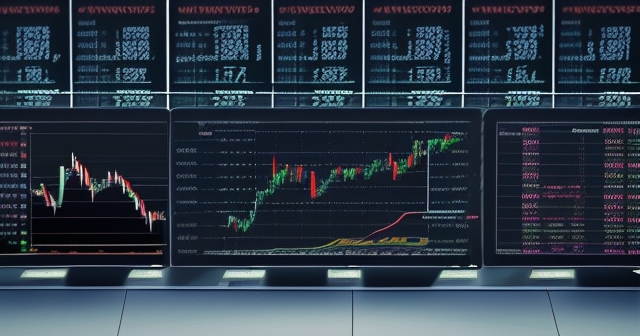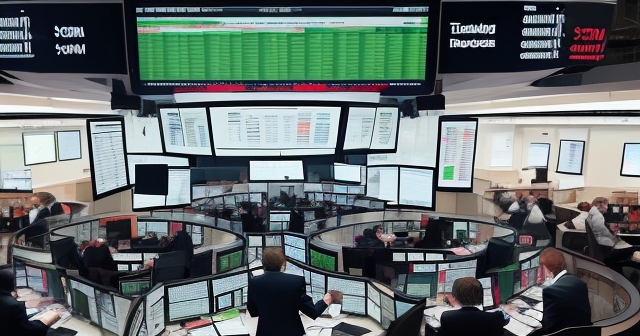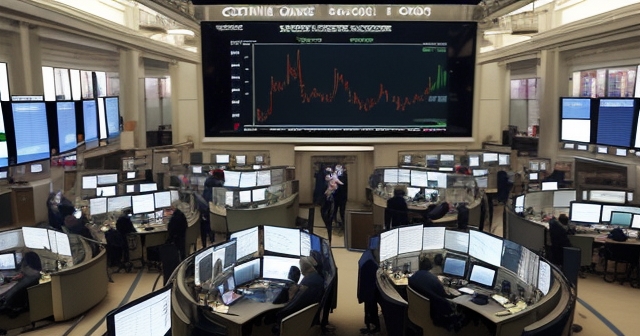Understanding CFDs and Options: Navigating Leverage, Risk, and Global Markets
The world of financial trading offers a diverse array of instruments, each with its own characteristics, opportunities, and risks. Among the most widely discussed are Contracts for Differences (CFDs) and Options. Both are derivatives, meaning their value is derived from an underlying asset, but they operate quite differently. As you embark on your trading journey or seek to deepen your understanding, grasping these distinctions is crucial. We’ll delve into what CFDs and Options are, the significant risks involved, particularly with leveraged products, the regulatory measures designed to protect you, and the critical role played by major global exchanges.
| Instrument Type | Definition | Key Characteristics |
|---|---|---|
| CFDs | A contract between a trader and a broker to exchange the difference in the price of an asset. | Allows trading on margin, no ownership of the underlying asset. |
| Options | A contract giving the holder the right to buy or sell an asset at a specified price before expiration. | Includes call and put options, requires payment of a premium. |
The allure of CFDs lies in their use of leverage, allowing traders to control a larger position with a smaller amount of capital. This can lead to significantly amplified profits but also poses a risk of equally magnified losses. For instance, with 30:1 leverage, a $1,000 deposit can control $30,000 worth of assets.

- CFDs do not grant ownership of the asset.
- Leverage magnifies both gains and losses.
- A loss can exceed your initial deposit.
The Stark Reality: High Risk of Rapid Money Loss
It’s imperative to confront the statistics head-on. Trading leveraged financial instruments like CFDs carries a high risk of rapid money loss. Data from providers often highlights this, with a significant percentage of retail investor accounts losing money when trading CFDs. While the exact percentage can vary, figures like 71% losing money with one provider underscore the harsh reality. This isn’t a minor hurdle; it’s a major challenge.
Here’s a breakdown of why retail investors often face losses:
| Factors Leading to Losses | Impact |
|---|---|
| High Leverage | Increased risk of large losses with small market movements. |
| Market Volatility | Rapid price shifts can lead to unexpected losses. |
| Lack of Understanding | Insufficient knowledge on margin and leverage can harm investments. |

Understanding this mechanism is not just about knowing the definition; it’s about appreciating the speed and scale at which losses can occur. Before you commit any capital, you must honestly assess if you can afford to lose the money you invest, and potentially more, when trading such high-risk instruments. This isn’t a suggestion; it’s a fundamental requirement for responsible trading.
Regulatory Safeguards: ESMA’s Intervention in the EU
Given the significant risks faced by retail investors trading leveraged products, regulatory bodies globally have taken action. A prime example is the intervention by the European Securities and Markets Authority (ESMA) within the European Union (EU). Recognizing the potential for substantial harm to retail clients, ESMA adopted stringent measures concerning Binary Options and CFDs under the Markets in Financial Instruments Regulation (MiFIR).
One of the most decisive actions was the prohibition on the marketing, distribution, or sale of Binary Options to retail investors in the EU, effective from July 2018. Binary Options, often marketed as simple “up or down” bets, presented significant investor protection concerns due to their inherently high-risk nature, poor payout structures, and lack of transparency. The prohibition was a clear signal from regulators about instruments deemed excessively risky for the average retail trader.

Following the Binary Options prohibition, ESMA also implemented restrictions on CFDs for retail investors in the EU, effective from August 2018. These measures were designed to mitigate some of the most acute risks associated with CFD trading. What were these key restrictions, and how do they aim to protect you?
Key CFD Restrictions for Retail Investors in the EU
The ESMA restrictions on CFDs for retail investors introduced several critical changes aimed at creating a safer trading environment. These weren’t minor tweaks; they fundamentally altered the terms under which retail clients could trade CFDs.
- Leverage Limits were imposed significantly reducing maximum leverage available.
- A Standardised Margin Close-out Rule was introduced to protect against negative equity.
- Negative Balance Protection was instituted to cap losses at total account balance.
Understanding these protections can help mitigate the risks associated with trading CFDs in the EU.
| Asset Class | Leverage Limits |
|---|---|
| Major Currency Pairs (like EUR/USD) | 30:1 |
| Major Indices (like S&P 500, DAX) | 20:1 |
| Other Commodities and Non-Major Equity Indices | 10:1 |
| Individual Equities (stocks) | 5:1 |
| Cryptocurrencies (like Bitcoin, Ethereum) | 2:1 |
These limits, dramatically lower than the 100:1, 200:1, or even higher leverage previously offered by some brokers, directly curb the amount of market exposure a retail trader can gain with a small amount of capital, thereby reducing the potential speed and size of losses.
Moreover, these regulations restrict the incentives CFD providers could offer retail clients and mandated standardized risk warnings. This transparency forces providers to acknowledge the high failure rates retail clients experience, promoting safer trading practices.

If you’re considering diving into the world of forex trading or exploring a wide range of CFD instruments, understanding the platform options available is key. Moneta Markets is an Australian-based platform offering over 1000 financial instruments, suitable for both novice and experienced traders. It’s definitely a platform worth researching to see if it aligns with your trading needs.
Stepping into Options and Futures Markets: Beyond CFDs
While CFDs allow speculation on price movements without asset ownership, Options and Futures are different types of derivatives often traded on large, regulated exchanges. These markets provide alternative ways to participate in price movements, hedge risk, or generate income, often involving standardized contracts and centralized clearing.
Major exchanges like Cboe and CME Group are central to these markets. They provide the infrastructure, liquidity, and regulatory oversight for trading a vast array of financial products. Cboe is well-known for its strength in U.S. Options, including benchmark products like S&P 500 Index Options and VIX Index options, the latter often used as a gauge of market volatility. CME Group operates across numerous asset classes, including Equity Index Futures and Options, Foreign Exchange (FX) Futures and Options, Interest Rate Futures and Options, and Commodity Futures and Options.
The scale of trading activity on these exchanges is immense, measured in billions or even trillions of USD daily across asset classes, and millions of contracts traded daily. This high volume indicates significant market liquidity, which means you can typically enter and exit positions efficiently without substantially impacting the price. This is a key difference from less liquid markets.
| Exchange | Products Offered | Trading Volume |
|---|---|---|
| Cboe | S&P 500 Options, VIX Options | 18.20M contracts/day |
| CME Group | Equity Index Futures, FX Futures, Commodity Futures | Measured in billions of USD daily |
Understanding Options involves grasping concepts like strike price, expiration date, and premium. An Option gives the holder the right, but not the obligation, to buy (Call Option) or sell (Put Option) an underlying asset at a specific price (the strike price) on or before a specific date (the expiration date). You pay a premium for this right. Futures contracts, on the other hand, are standardized agreements to buy or sell an asset at a predetermined price on a specific date in the future. Unlike options, futures obligate both parties to the transaction.
The Role of Global Exchanges: Infrastructure and Data
Exchanges like Cboe and CME Group do more than just provide a trading venue; they are critical components of the financial market infrastructure. They offer access to a wide range of benchmark products – those widely recognized and traded instruments that serve as standards for pricing and analysis.
Furthermore, these exchanges provide essential resources for traders. Access to comprehensive Market Data is fundamental. This includes real-time price feeds, historical data for backtesting strategies, and data analytics tools that help you understand market trends and participant behavior. Imagine trying to navigate a city without a map or GPS – that’s what trading without reliable market data would be like.
They also play a vital role in education. Resources from bodies like the CME Institute offer insights into trading strategies, risk management techniques, and the mechanics of derivatives markets. While this education doesn’t eliminate risk, it equips you with the knowledge needed to make more informed decisions. Exchanges also highlight opportunities within the markets, often noting how periods of volatility, while increasing risk, can also present strategic trading opportunities, particularly when using instruments like Options and Futures for hedging or speculation.
The infrastructure also includes clearing services, which significantly reduce counterparty risk. When you trade on an exchange, a clearing house (like CME Clearing or the OCC for U.S. Options) acts as the buyer to every seller and the seller to every buyer, guaranteeing the trade and mitigating the risk that your counterparty might default.
Diving Deeper: Specific Products and Market Metrics
Let’s look at some specific examples of products traded on these exchanges to understand the breadth of the markets. On Cboe, beyond the S&P 500 and VIX options, you find options on various other indices, ETFs, and individual equities. The VIX Index itself is derived from S&P 500 index options prices and reflects the market’s expectation of future volatility, making VIX options valuable tools for hedging against market swings or speculating on volatility itself.
CME Group offers a diverse range of futures and options across categories like Interest Rates (e.g., Treasury futures), FX (e.g., Euro futures, Yen futures), Commodities (e.g., Crude Oil, Gold, Corn), and Equity Indices (e.g., E-mini S&P 500 futures, Micro E-mini contracts). They also innovate with products like Spot-Quoted futures, Mini and Micro contracts (like Micro WTI Crude Oil futures or Micro Ether futures), making exposure to these markets accessible in smaller sizes.
Key market metrics to pay attention to when exploring these instruments include Volume and Liquidity. High trading volume generally indicates high liquidity, meaning there are plenty of buyers and sellers, making it easier and cheaper to enter and exit trades. Liquidity is crucial, especially when trading large positions or in volatile markets, as it reduces the risk of significant price slippage (executing your order at a price worse than expected).
Understanding the specific contract specifications for Futures and Options is also vital. This includes contract size (the amount of the underlying asset covered by one contract), tick size (the minimum price movement), trading hours, and delivery specifications (for physically settled contracts, though many are cash-settled). Ignorance of these details can lead to costly mistakes.
When selecting a trading platform, flexibility and technological advantage are key considerations. Moneta Markets is noteworthy for supporting major platforms like MT4, MT5, and Pro Trader. This, combined with its emphasis on high-speed execution and competitive low spreads, contributes to a potentially favorable trading experience across various instruments, including FX and CFDs.
Comparing Approaches: CFDs vs. Exchange-Traded Derivatives
While both CFDs and Options/Futures are derivatives, their trading mechanics and regulatory environments (especially for retail traders in specific regions like the EU) differ. CFDs are typically Over-The-Counter (OTC) products offered by brokers. This means you are trading directly with the broker, not on a centralized exchange (though brokers often hedge their positions on exchanges). This can sometimes introduce counterparty risk with the broker, although reputable brokers are well-capitalized and regulated.
Exchange-traded Options and Futures, conversely, are standardized contracts traded on public exchanges with a clearing house guaranteeing the trade. This structure provides centralized liquidity and reduces counterparty risk significantly. The cost structure can also differ: CFDs often involve spreads and sometimes commissions or financing costs, while Options have a premium and commissions, and Futures have commissions and exchange fees.
For retail investors, the regulatory difference is particularly stark in the EU post-ESMA intervention. CFD trading for retail clients now has significant leverage limitations and protections like negative balance protection. Exchange-traded derivatives might not be subject to the exact same set of retail-focused rules (depending on the specific product and your location), although exchanges themselves are heavily regulated entities. This highlights the need to understand the regulatory framework specific to the product you are trading and the jurisdiction you are in.
Beyond the Basics: Strategies and Risk Management
Moving beyond simply buying and selling, professional trading involves developing and implementing robust strategies and, crucially, managing risk. Both CFDs and Options/Futures can be used in various strategies, ranging from simple directional speculation (betting on price going up or down) to complex hedging and arbitrage techniques.
For example, CFDs can be used for short-term trading strategies due to their leverage and accessibility to a wide range of markets. Options, with their non-linear payoff structures and limited risk for the buyer (the maximum loss is the premium paid), can be used for strategies involving volatility, time decay, or complex combinations (like spreads, straddles, or strangles) to profit from specific market conditions.
Futures are widely used for hedging by producers and consumers of commodities, as well as for speculation on macroeconomic trends (like interest rate movements or currency fluctuations). The standardization of futures contracts makes them highly liquid and suitable for institutional trading, though retail traders also participate, often via smaller Mini or Micro contracts.
Effective risk management is non-negotiable. For CFDs, this involves understanding and setting stop-loss orders, managing your leverage exposure carefully, and only risking a small percentage of your total capital on any single trade. With Options, risk management involves understanding the maximum potential loss (for option buyers) or the potentially unlimited loss (for certain option sellers), and using strategies like spreads to define risk. For Futures, it involves managing margin requirements and setting stop-losses.
Exchanges provide tools like trading simulators and analytical platforms to help you practice strategies and understand risk without using real money initially. Leveraging these resources is a wise step before committing capital.
If you’re looking for a broker with strong regulatory backing and global trading capabilities, Moneta Markets holds licenses from multiple regulators including FSCA, ASIC, and FSA. They offer segregated client funds, free VPS hosting, and 24/7 multilingual support, which makes them a popular choice for many traders seeking reliability and comprehensive service.
Investor Considerations and Final Thoughts
As we navigate the landscape of CFDs and Options, several key considerations emerge for you as an investor or trader. Firstly, knowledge is power, but incomplete knowledge in leveraged markets is dangerous. You must understand exactly how the product you are trading works, its specific risks, and the potential implications of leverage and margin.
Secondly, regulation matters. While ESMA’s measures provide significant protections for retail CFD traders in the EU, regulatory frameworks vary significantly by jurisdiction and product. Don’t assume the same rules apply everywhere. Always check the regulatory status of your broker and the specific protections (like negative balance protection) available to you based on your location.
Thirdly, assess your personal financial situation and risk tolerance honestly. Can you afford to lose the capital you are considering investing? Leveraged products are not suitable for everyone, especially those who cannot absorb potential losses. Start small, perhaps with a demo account, and gradually increase your exposure as your understanding and confidence grow.
Major exchanges provide valuable marketplaces, data, and educational content, but trading even on these platforms involves risk. Volatility can lead to rapid price changes, and even highly liquid markets can experience unexpected movements. Develop a trading plan, use risk management tools (like stop-losses), and stick to your plan.
Conclusion: Knowledge is Your Greatest Asset
CFDs and Options are powerful financial instruments that offer pathways to participate in global markets and potentially achieve significant returns, often with the aid of leverage. However, they also come with substantial risks, particularly the high risk of rapid money loss, which is a reality for a significant percentage of retail traders using leveraged products like CFDs.
Regulatory bodies, such as ESMA in the EU, have implemented crucial measures, including leverage limits, mandatory margin close-out rules, and negative balance protection, to safeguard retail investors trading CFDs. These regulations are vital for understanding the current trading environment if you are based in or trading with brokers regulated in these regions.
Meanwhile, major global exchanges like Cboe and CME Group provide the robust infrastructure for trading standardized derivatives like Options and Futures across diverse asset classes. These platforms offer deep liquidity, access to essential market data, and valuable educational resources that can help you build your understanding and refine your trading strategies.
Ultimately, navigating the world of CFDs and Options requires diligence, continuous learning, and a strong emphasis on risk management. Understand the specific product you are trading, be aware of the regulatory protections (or lack thereof) available to you, and only commit capital you can afford to lose. Your most valuable asset in the complex world of derivatives trading is your knowledge and your disciplined approach to managing risk.
cfd optionsFAQ
Q:What are the main differences between CFDs and options?
A:CFDs are contracts to exchange price differences, while options provide the right to buy or sell an asset.
Q:How does leverage affect CFD trading?
A:Leverage allows you to control a larger position with less capital, but it also increases potential losses.
Q:What protections are in place for retail CFD trading?
A:In the EU, regulations include leverage limits, negative balance protection, and standardized margin close-out rules.

留言